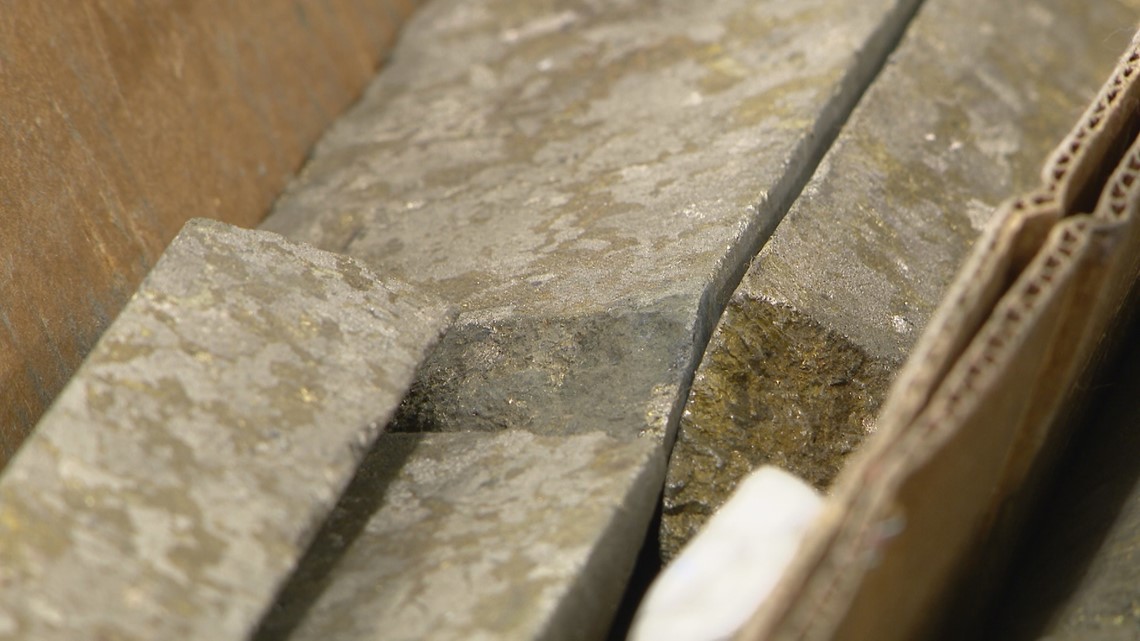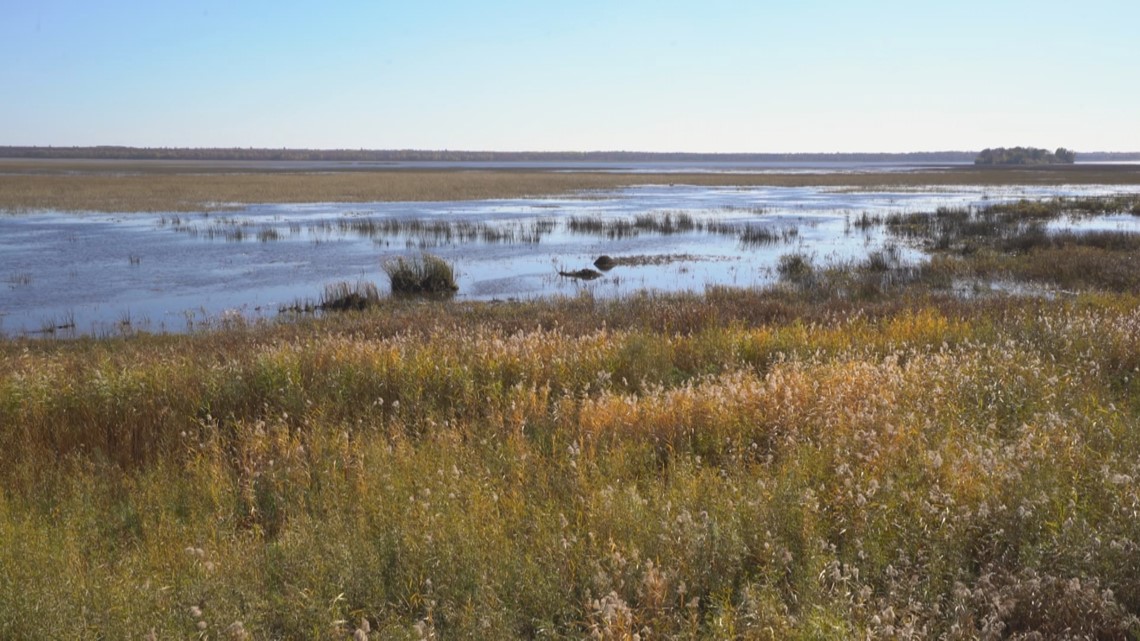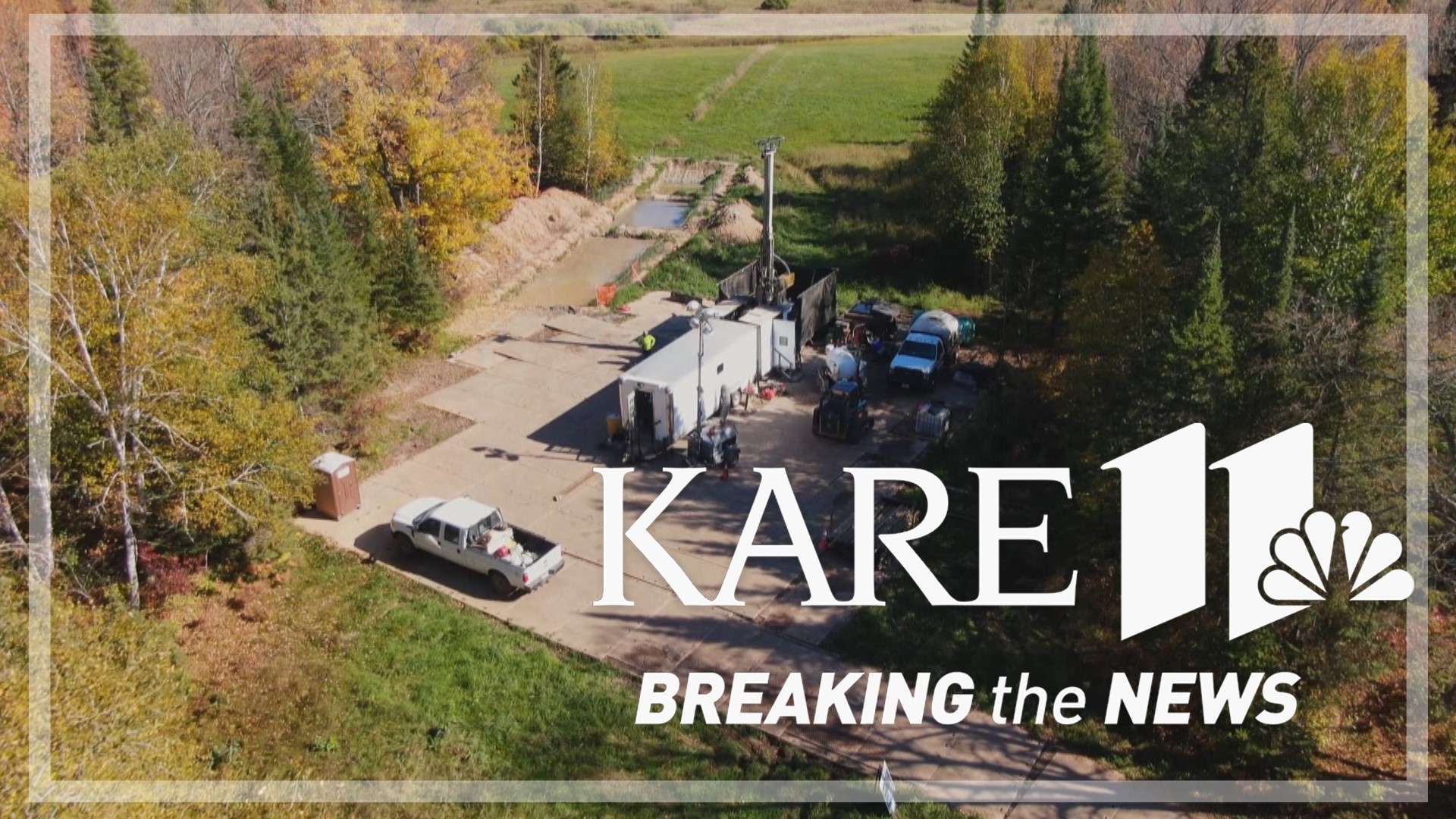TAMARACK, Minn. — The first sign as to what Talon Metals is working on in rural Aitkin County is parked outside their company office in Tamarack, Minnesota: A Tesla outfitted with a vehicle wrap that sports the company name, and a license plate that reads "NI 4 EV," or nickel for electric vehicles.
The company has 90 workers and employs more people than actually live in the town, which is 62. Talon Metals has mineral leases for 31,000 acres in Aitkin County and is currently drilling core samples below ground, mapping out where nickel and other precious metals can be found.
They've found what are some of the highest known concentrations of nickel in the world. They call the site the Tamarack Project.
"These are really special," said Talon's Chief Exploration Officer Brian Goldner, as he looks at core samples that contain 9% nickel mineralization.
Goldner says globally, a deposit is considered "high grade" when it contains one percent nickel. Talon has mapped deposits with up to 9-10% nickel.
Goldner says there is only one other place in the country with such highly-concentrated nickel deposits: The Eagle Mine in Michigan, which is the United States' first, and currently only, nickel mine.
"This could be the second one," said Goldner of the Tamarack site.


The company has captured the attention of the maker of the electric vehicle parked outside their office.
In January, Tesla committed to buying 165 million pounds of nickel in concentrate from Talon to make the batteries for their vehicles. Talon says the amount is about three-quarters of their total resource.
The companies envision an entirely domestic operation, from when the minerals are pulled from the ground to when the vehicles come off the line.
"We would be the first supplier of U.S. nickel for a full electric vehicle battery supply chain in the U.S.," said Jessica Johnson, Community Outreach and Government Relations Manager for Talon Metals.
First, though, the Tamarack Project needs to mine. To get the permits needed to do that, they need to go through an extensive environmental review by the state. Talon says they'll be submitting their mine plan to the state in February.
On Oct. 19, Talon was one of 20 companies awarded $2.8 billion in grants from the Biden administration to build and expand domestic manufacturing of batteries for electric vehicles in multiple states. The company is slated to receive a $114 million grant, which will go toward "project construction and execution costs" for a Battery Minerals Processing Facility in North Dakota.
According to Talon, the North Dakota plant would process nickel sources from the Tamarack mine in Minnesota and other potential sources in North America.
An acquisition for the North Dakota site is currently under negotiation.
When it comes time to mine, Talon will almost certainly face pushback.
This type of mining has long drawn environmental concerns. The process of mining nickel and other precious metals can create sulfuric acid.
Talon says it has plans to safely manage that waste.
But the nearby Mille Lacs Band of Ojibwe worries contamination from a mine could harm their sacred wild rice.
"This is an environmental justice issue," said Kelly Applegate, the Band's Commissioner of Natural Resources. "This is yet another example of industry coming in and taking things from the area, from the land, which can affect our people."
According to Talon, "removing the processing facilities from the Tamarack mine site in Minnesota" and moving them to North Dakota "significantly reduces land disturbance and the scope of environmental review and permitting. Both facilities will undergo the science-based permitting process in both states that include an opportunity for public comment and government-to-government consultations with tribal sovereign governments."


The agreement with Tesla requires the mine to be up and running by the end of 2026, a relatively short timeframe considering environmental reviews can take years.
But Talon argues they'll make the deadline. They say the money to be made from the highly-concentrated nickel in their project allows them to conduct a more precise, and expensive, type of underground mine, which they describe as "surgical."
"You can decide on a room-by-room or a block-by-block basis: Do you take that, or do you leave that?" explained Goldner.
The 439 holes Talon has drilled so far, some as far as 2,000 feet below ground, have allowed them to create a 3D map of the mine proposal. It shows where the known nickel deposits are and the underground roads which will allow trucks to descend for mining.
Rather than an open-pit mine, in which the earth is scooped away to get the minerals underneath, Talon argues their design allows for a smaller footprint and therefore less impact on the environment.
But that determination ultimately lies with the state of Minnesota.

